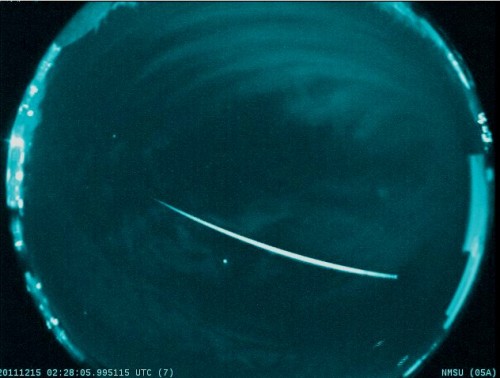If there are no clouds we can see up to 100 meteors per hour

Every few months the Earth passes in the trail of dust and ice flakes left behind by comets, and the result is a spectacular shower of meteors, also known as shooting stars. In the middle of December comes the season of the Geminids, meteors so called because they seem to come to us from the constellation Gemini - twins. Tonight (between Thursday and Friday) a peak of this meter is expected, with a rate of more than 100 meteors per hour. "The peak of the meter will be at approximately one after midnight, and then the Gemini system will be more or less above its head, at the zenith," explains Dr. Yigal Fat-El, chairman of the Israel Astronomical Society, and director of the Givatayim observatory. "From there the meteors will scatter in all directions.
Unlike other meteors, the Geminids are not created from a comet, but from the holiday asteroid around the Sun, named Phaeton. "These are ice and dust crumbs that weigh less than a gram," explains Fat-El, "but when they enter the atmosphere at a speed of 37 km per second, and burn, they leave a streak of hot air that looks like a shooting star to us."
Tonight's meteor shower may be even more active than expected, because completely coincidentally the Earth also passes in the wake of comet Virtanen. However, we can only see all this beauty if there are no clouds. The meteorological service actually predicts a cloudy night, but they say that there may also be holes in the thick mantle, so we might have a chance to see at least part of the spectacular rain.

2 תגובות
Yossi, "meteorite shower"?
So how did we stay alive?
Several years ago, the newspapers wrote about an expected meteor shower. The next day, a fake "Reuters" photo appeared in the newspaper I was reading at the time. how did i know The photographer aimed his camera at the North Star and left the shutter open and managed to photograph the natural movement of the stars, but what he got were circular arcs centered, how could he not? At the North Star that the camera was pointing at. I wrote them an angry letter that they didn't bother to answer. This is how the world's fame passes her by. For those who don't remember, "Reuters" was the first news agency that, since its establishment, boasted of its great credibility.